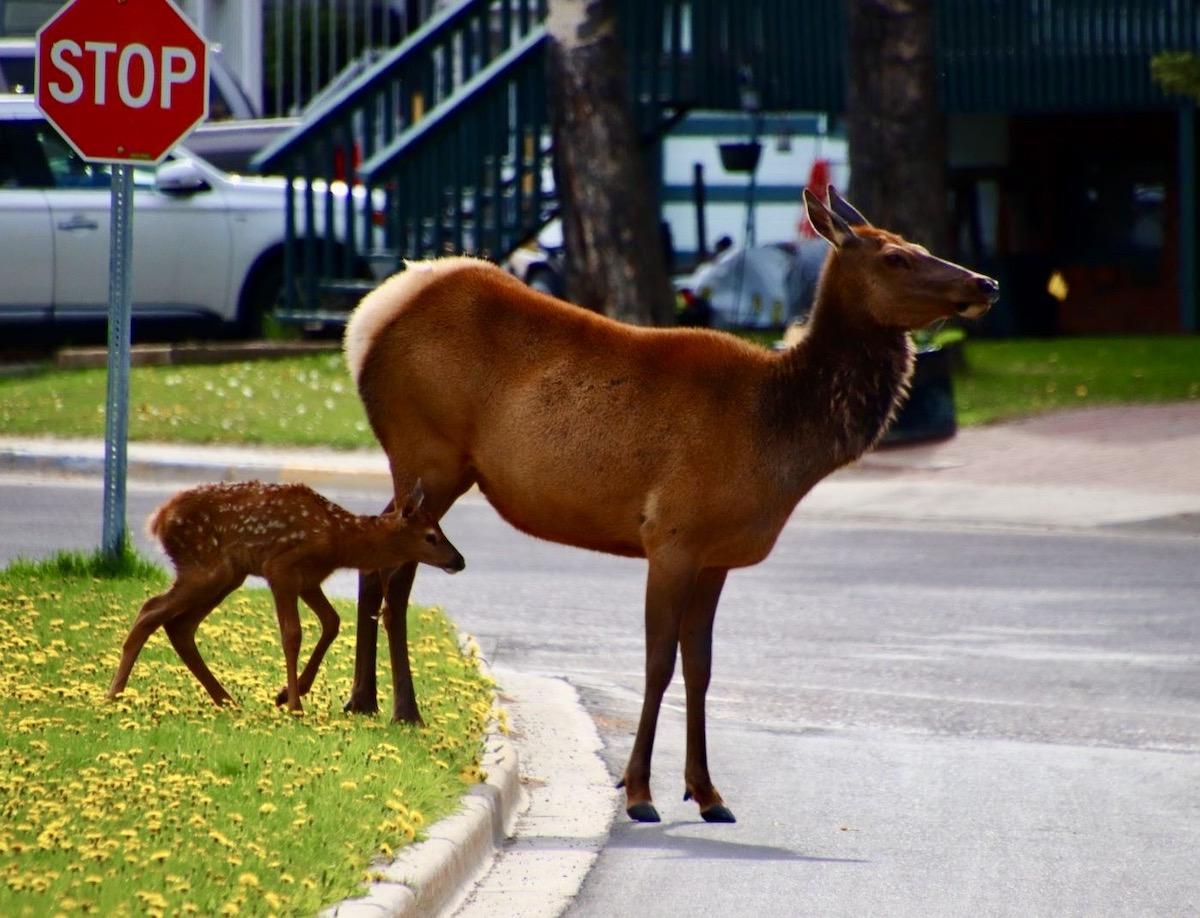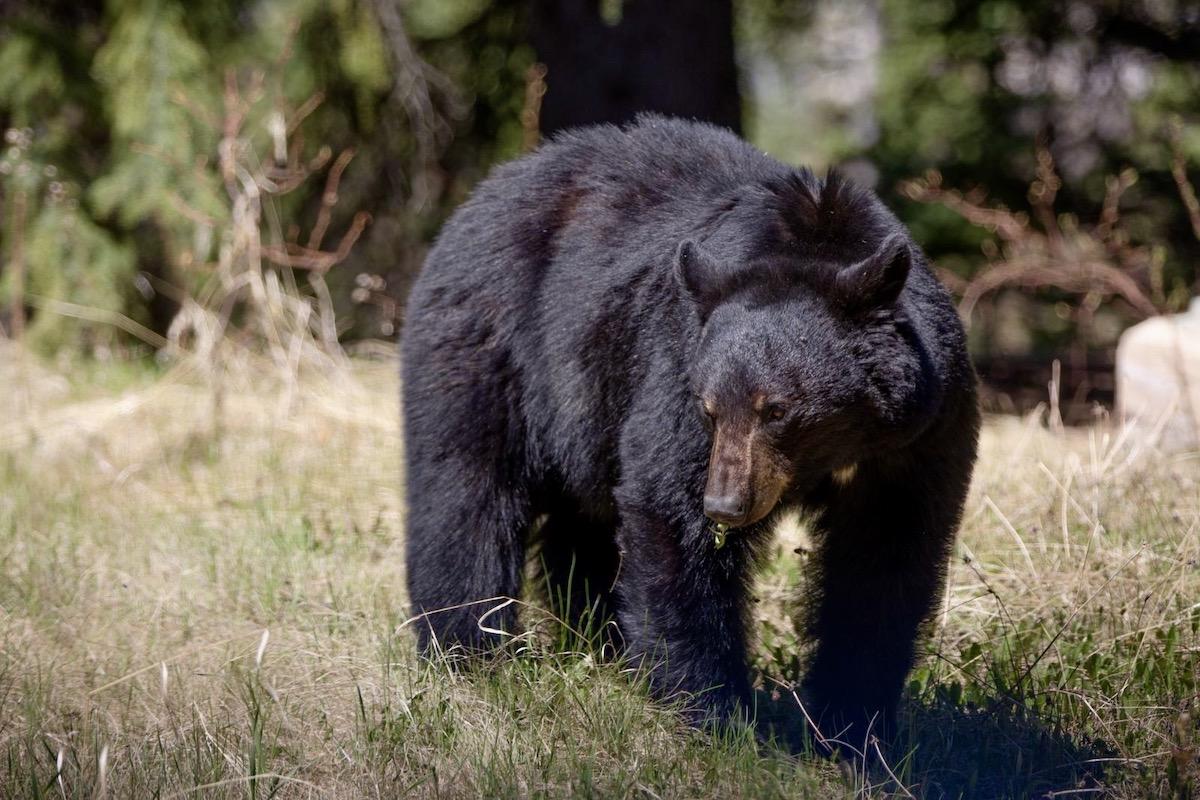
Parks Canada trapped and moved two young grizzlies from Jasper townsite/R. Schmidt, Parks Canada
When young grizzly bear siblings spotted in Jasper townsite couldn’t be deterred by hazing recently, Jasper National Park wildlife specialists had to translocate the three-year-old bears — a step that’s only used when absolutely necessary.
Parks Canada deployed bear traps on May 30 and captured the two high-profile grizzlies. The bears were fitted with satellite collars and moved into the backcountry near the south boundary. Parks Canada worked with provincial partners and external grizzly bear experts to make translocation plans. The bears are being monitored by GPS collars and have remained in their new location since translocation.
Jasper townsite and surrounding areas continue to see high grizzly bear activity, with several bears profiting from young elk calves that are now an abundant food source. Visitors and residents should stay alert while hiking, biking and using park trails and green spaces within the townsite area.
Female elk use areas of town — including green spaces and back yards — to give birth. This behavior occurs when elk become habituated to the townsite, attempting to avoid predation by bears and other animals. If elk are spotted in town, an early notification to Parks Canada staff helps avoid potential incidents of wildlife predation in the community. Call Jasper Dispatch at 780-852-6155.

All kinds of wildlife can be spotted in Jasper townsite/Parks Canada
Responding to bears as soon as possible gives bears the best chance for survival and reduces the chances of them becoming further habituated or food-conditioned.
People are urged to:
• Treat backyards like backcountry campsites and remove all possible wildlife attractants including bird feeders, pet food, barbecue grease catchers and fruit trees. Keep dogs on-leash outside yards.
• Phone Jasper Dispatch at 780-852-6155 immediately (24 hours a day) if you see a bear in the townsite area.
• Maintain a safe distance (100 metres/330 feet) at all times from bears, and don’t approach or surround them.
• Ask Parks Canada to remove your fruit tree at no charge.

Parks Canada has plenty of tips for being bear aware/Parks Canada
The best way to avoid bear encounters is to be alert and aware of your surroundings so you detect a bear’s presence at a safe distance. Travel in groups, stay alert, don’t use headphones on the trails, and carry bear spray and know how to use it.
To reduce the risk of a surprise encounter:
• Travel in groups, on established trails and during daylight hours.
• Exercise prudence when biking on trails.
• Be especially cautious at dawn and dusk, when wildlife is most active.
• Make noise and clap, sing or yell to announce your presence, especially where a bear might not otherwise smell, hear or see you coming (bear bells are not very effective).
• Carry bear spray in an easily accessible location and know how to use it.
• Keep dogs on a leash at all times.
• Leave the area if you see a bear or fresh tracks, droppings or diggings.
• Leave the area if you see or smell a dead animal as a bear may be nearby.
• Never approach, entice or feed wildlife.
If you encounter a bear:
• Do not approach the animal — keep 100 metres (330 feet) away.
• Stay calm. If a bear rears on its hind legs and waves its nose about, it is trying to identify you.
• Remain still and talk calmly so that it knows you are human and not a prey animal.
• Bears may also bluff-charge, running towards you and turning away at the last moment. A scream or sudden movement might trigger an attack.
• Pick up children and stay in a group.
• Back away slowly — don’t run.
• Leave the area. If this is impossible, wait until the bear leaves. Make sure it has an escape route.
• Report any safety incidents related to people, bears, elk or carcasses to Parks Canada.

 Support Essential Coverage of Essential Places
Support Essential Coverage of Essential Places




Add comment